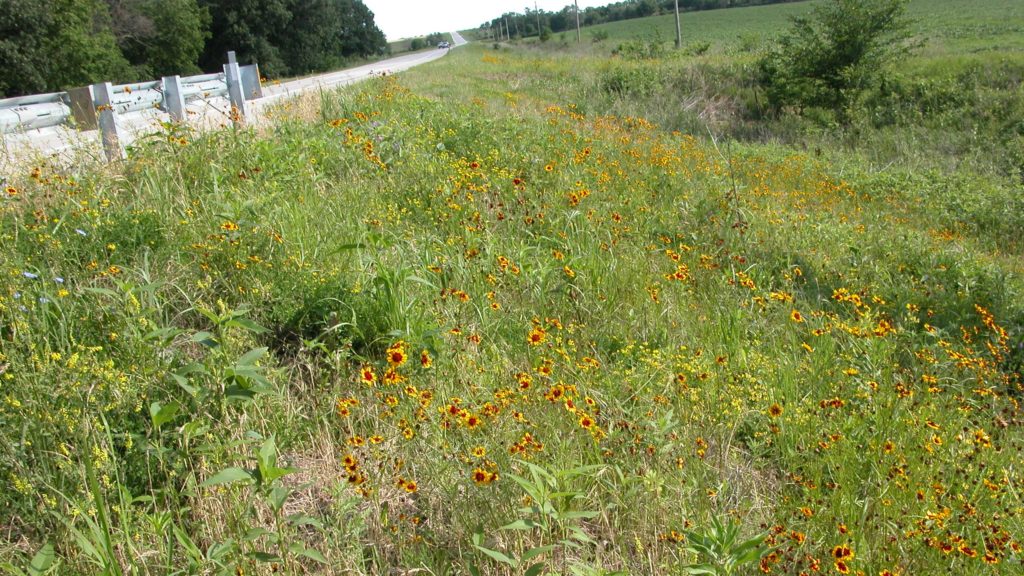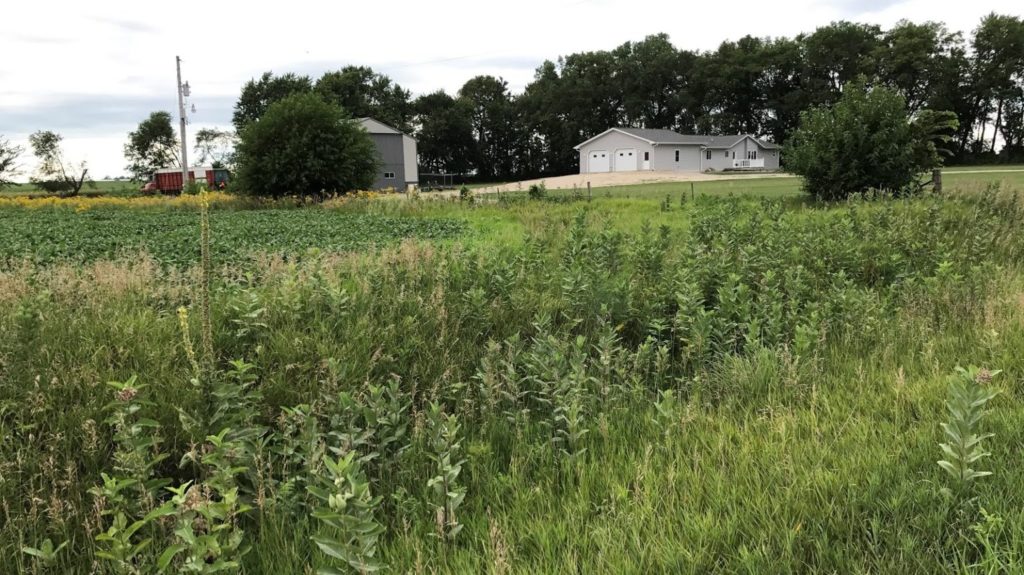There’s a relatively new campaign catching on across the world urging home and landowners to skip their early season lawn care—at least during the month of May. The campaign is called No Mow May and it asks landowners to forego mowing their lawn during the entire month of May to let flowers in lawns bloom, providing a feast of nectar for pollinators. According to an article by Molly Martin for Bee City USA, No Mow May is a conservation initiative first popularized by Plantlife, a British conservation charity working nationally and internationally to save threatened wildflowers, plants and fungi. The campaign has taken off and has been adopted by numerous pollinator-friendly organizations, including many in the United States.

Reducing Mowing on Roadsides
Roadsides in this country add up to millions of miles of potential habitat, many of these in rural agricultural areas. That is just one of several reasons why state agencies like Departments of Transportation (DOT) and county road departments have also adopted more strategic mowing practices for roadsides in recent years. The Fixing America’s Surface Transportation (FAST) Act passed in 2015 even included a provision directing the U.S. Secretary of Transportation to use existing authorities, programs and funding to encourage pollinator habitat efforts by willing State DOT’s. To aid this effort, the Pollinator Partnership created the Technical Manual for Maintaining Roadsides for Pollinators to give guidance for DOTs across the country on how to adopt best practices to support pollinators. The manual recommends DOTs modify their existing maintenance practices to support pollinator habitat, including reducing mowing on roadsides to allow nectar-producing wildflowers to bloom. Additionally, the Nationwide Candidate Conservation Agreement (CCAA) for the Monarch Butterfly on Energy and Transportation Lands was finalized in 2020 and works to encourage energy and transportation landowners and land managers to adopt measures to create net conservation benefits for the monarch butterfly. For more information on the provisions made for owners of land adjacent to rights of way enrolled in the CCAA, see the Rights-of-Way as Habitat Working Group at the University of Illinois-Chicago here.

Best Mowing Practices at Home
Applying sensible mowing practices is a principal of the Monarch Collaborative. As we mentioned in a blog post last year, adopting pollinator-friendly mowing practices is a cost-saving, and relatively simple way to help declining pollinator populations. For many, avoiding mowing altogether may not be possible, so when mowing is necessary, avoid times of peak monarch activity to minimize direct impacts to the monarch larvae growing on the milkweed plants. Other mowing (or non-mowing) best practices include:
- Analyze whether the areas you mow including your roadsides are a necessary expense of time and equipment. They may be the few areas left to support vibrant and necessary pollinator habitat. A manicured area is a desert in the eyes of pollinators.
- If you feel you have to mow, limit mowing to only targeted areas to preserve milkweeds and ensure some areas are left for beneficial insects. .
- Understanding the breeding and migration cycles of monarchs can help give a timeframe to mow. The Monarch Joint Venture provides maps for recommended management timing to minimize unintended harm to monarchs here.
- Find new places on your farm for monarchs, other pollinators, and wildlife to thrive by converting idle areas to prairie or pollinator habitat.
If you are not able to fully adopt a No Mow May approach on your land, every bit helps! Adopting sensible mowing practices helps sustain healthy ecosystems that are beautiful, support pollinators and other wildlife, and provide additional benefits for air, water, and soil health.
